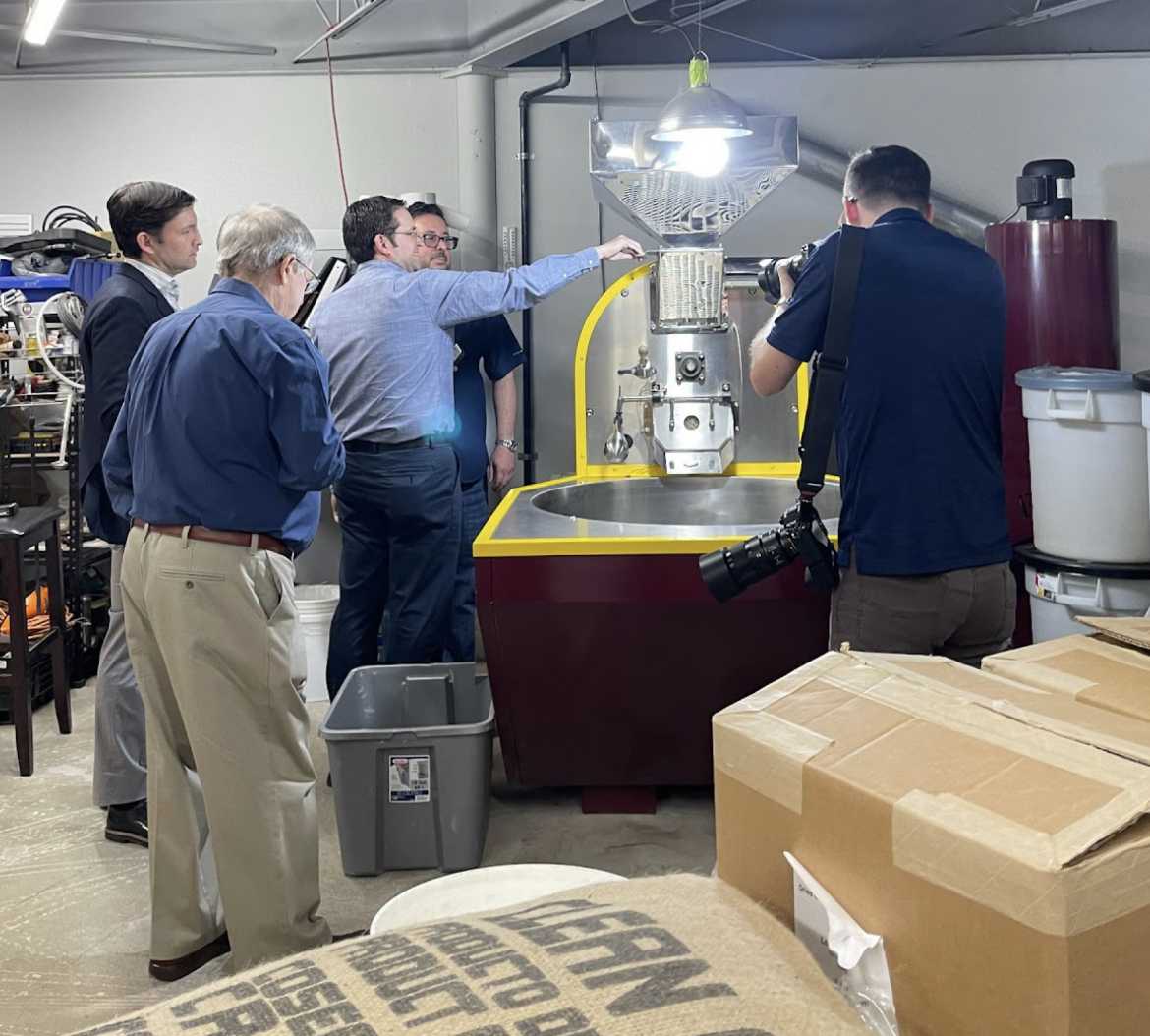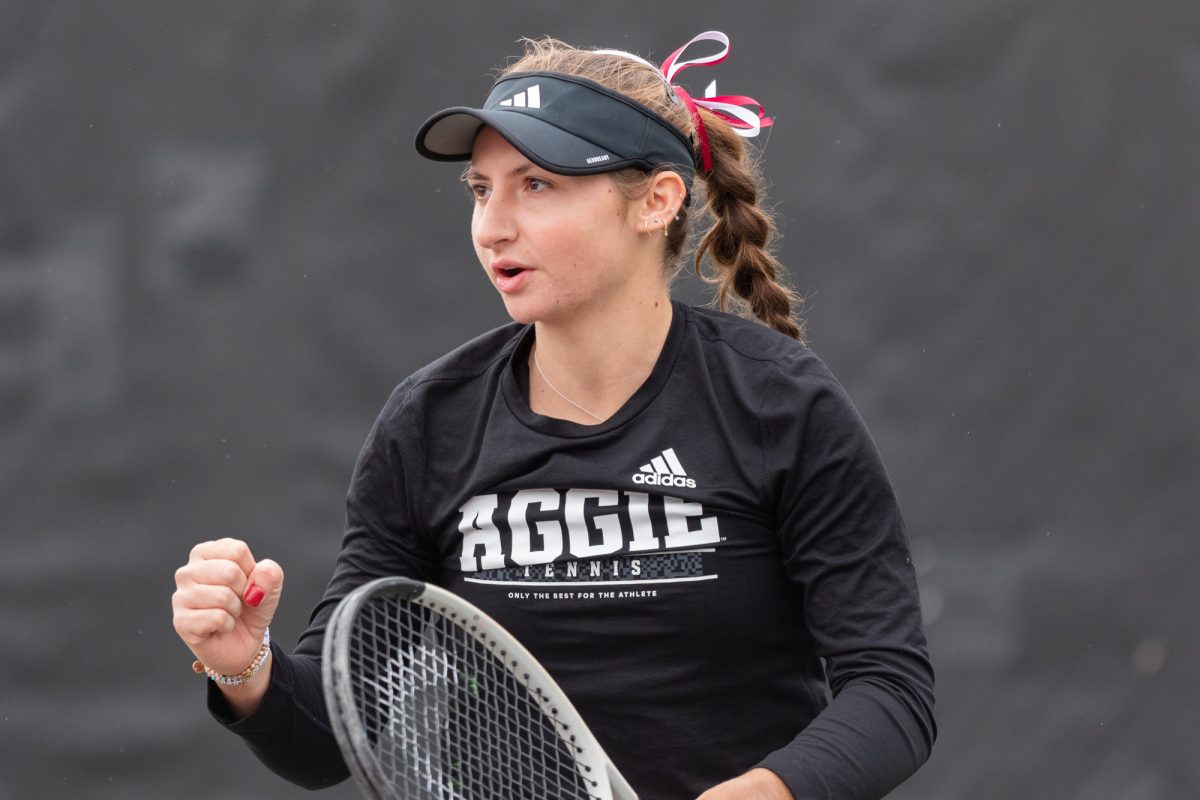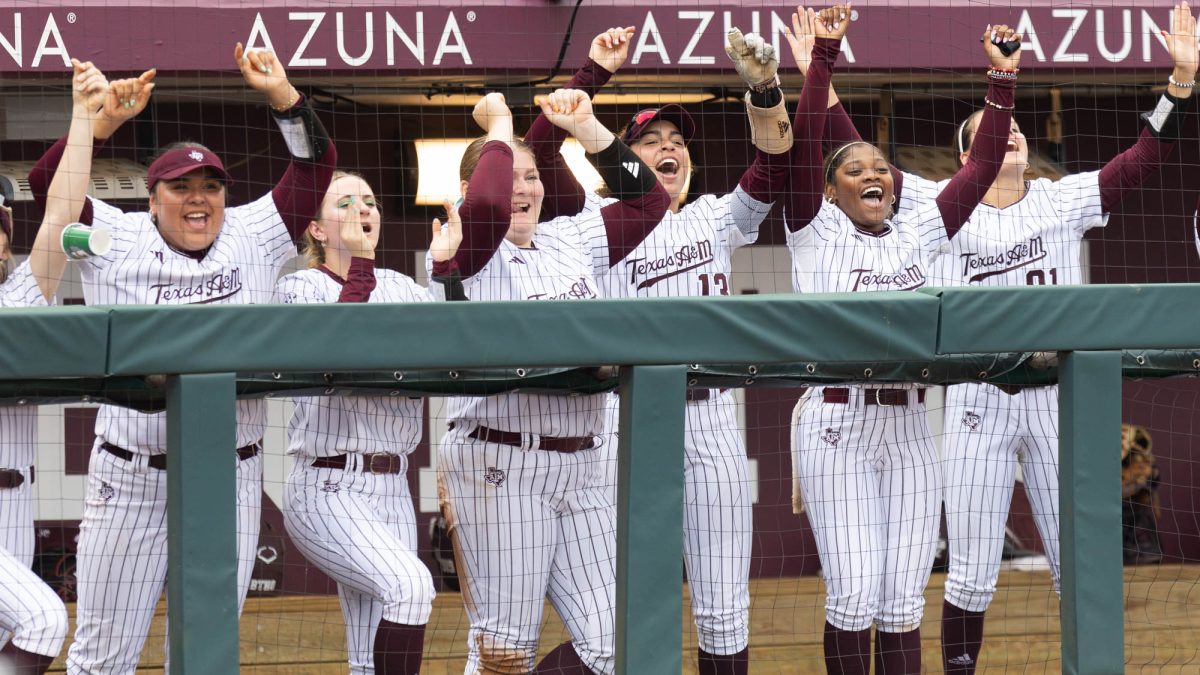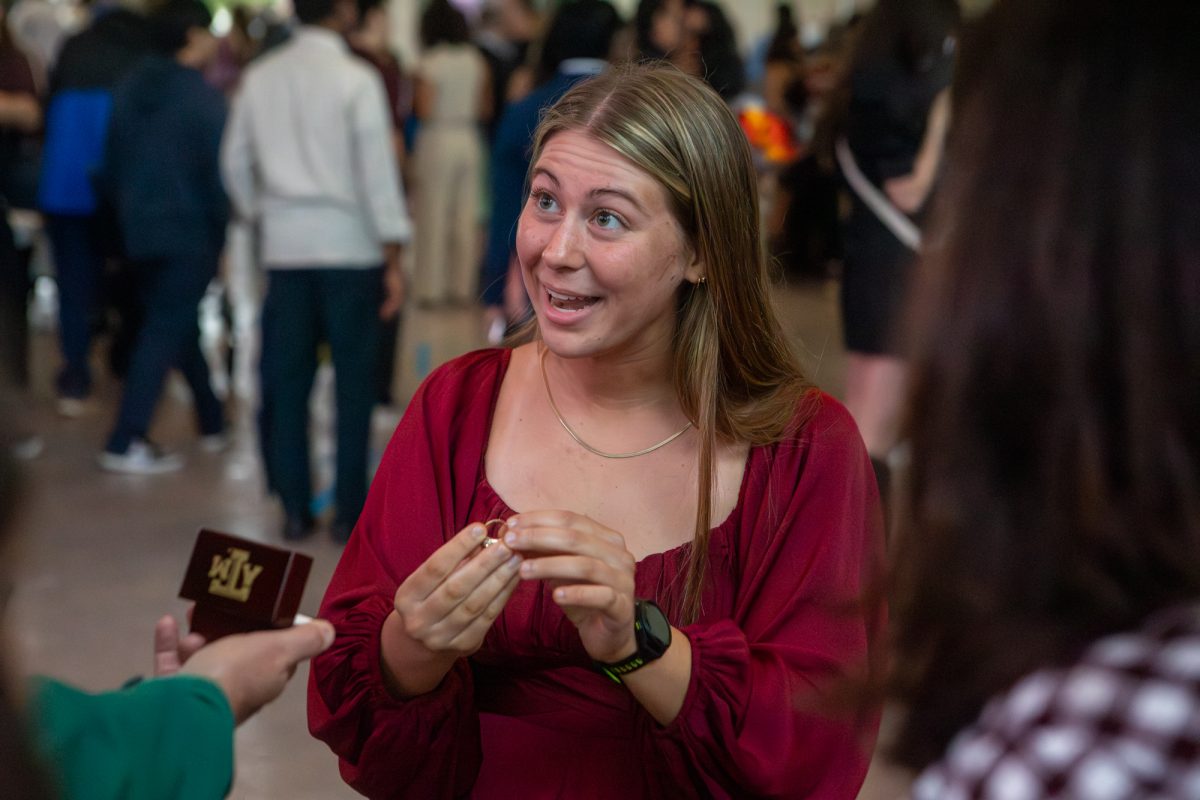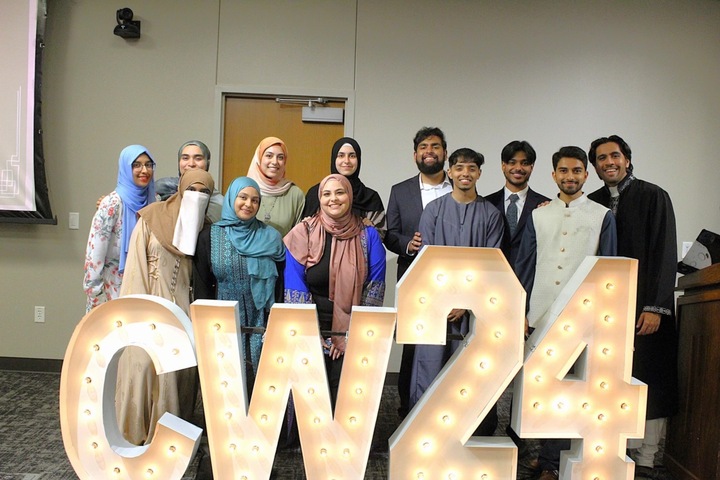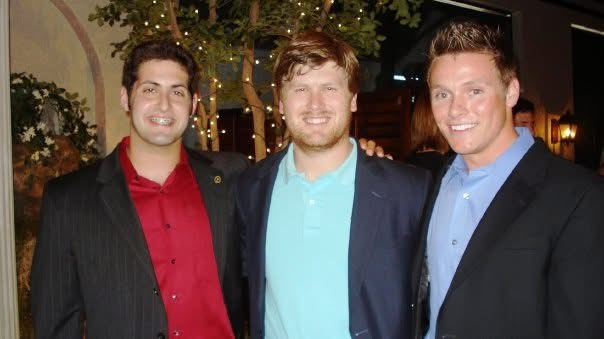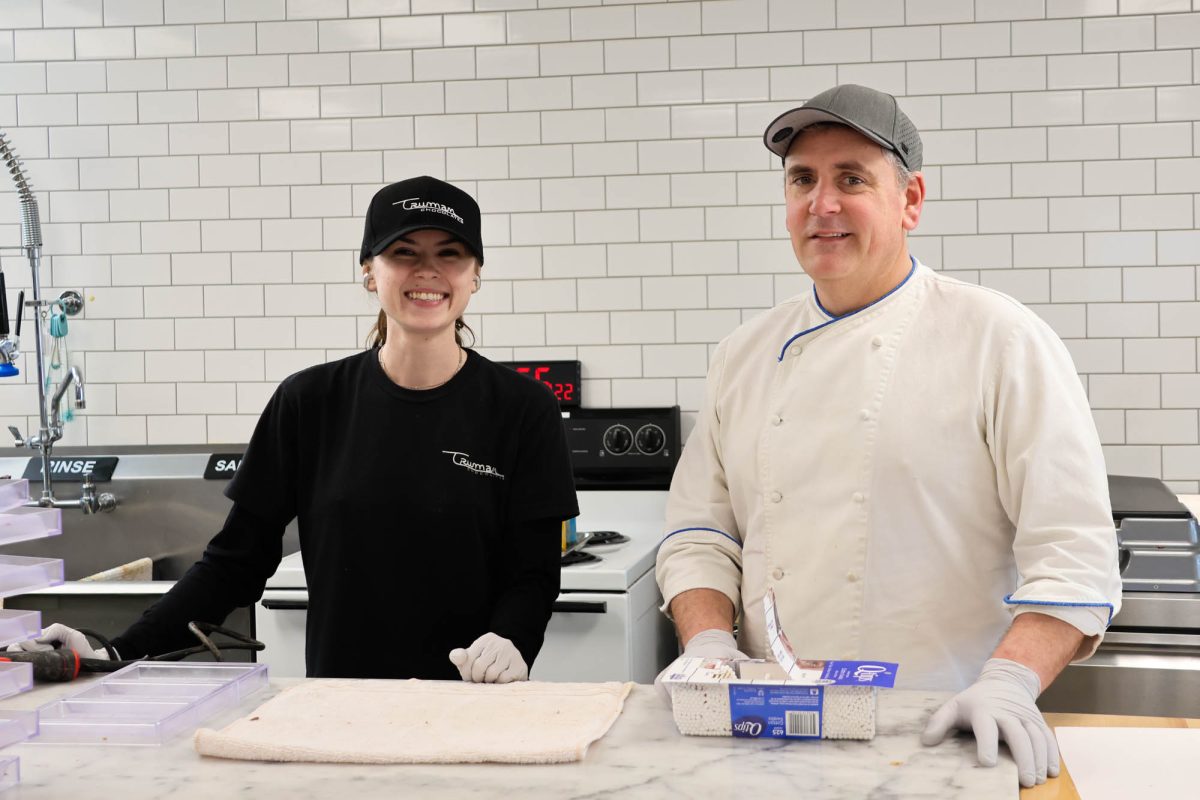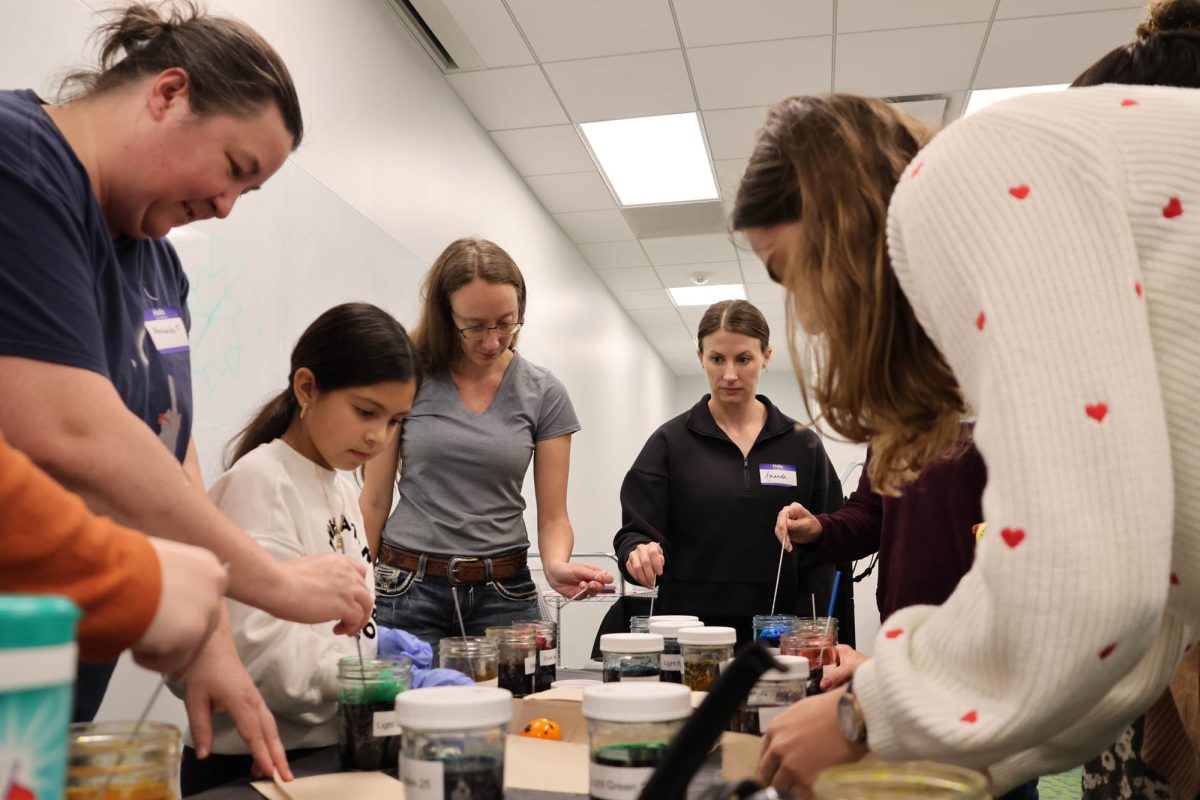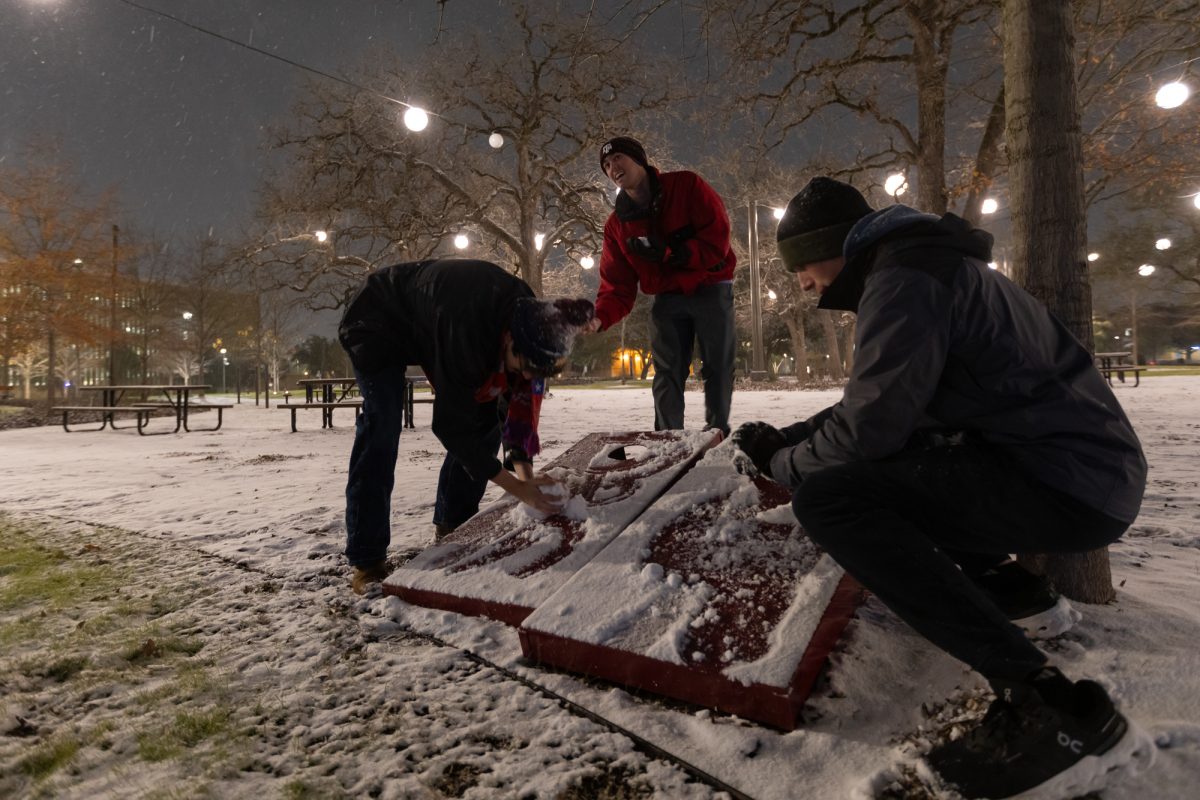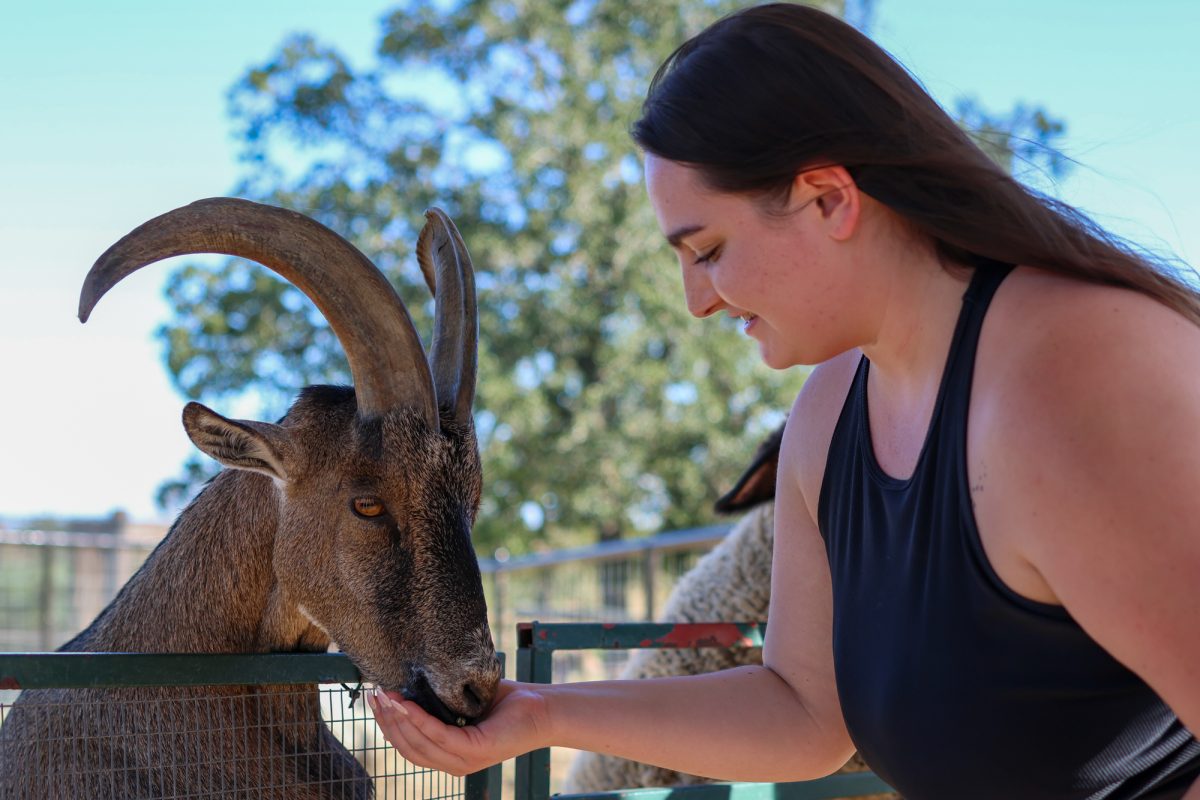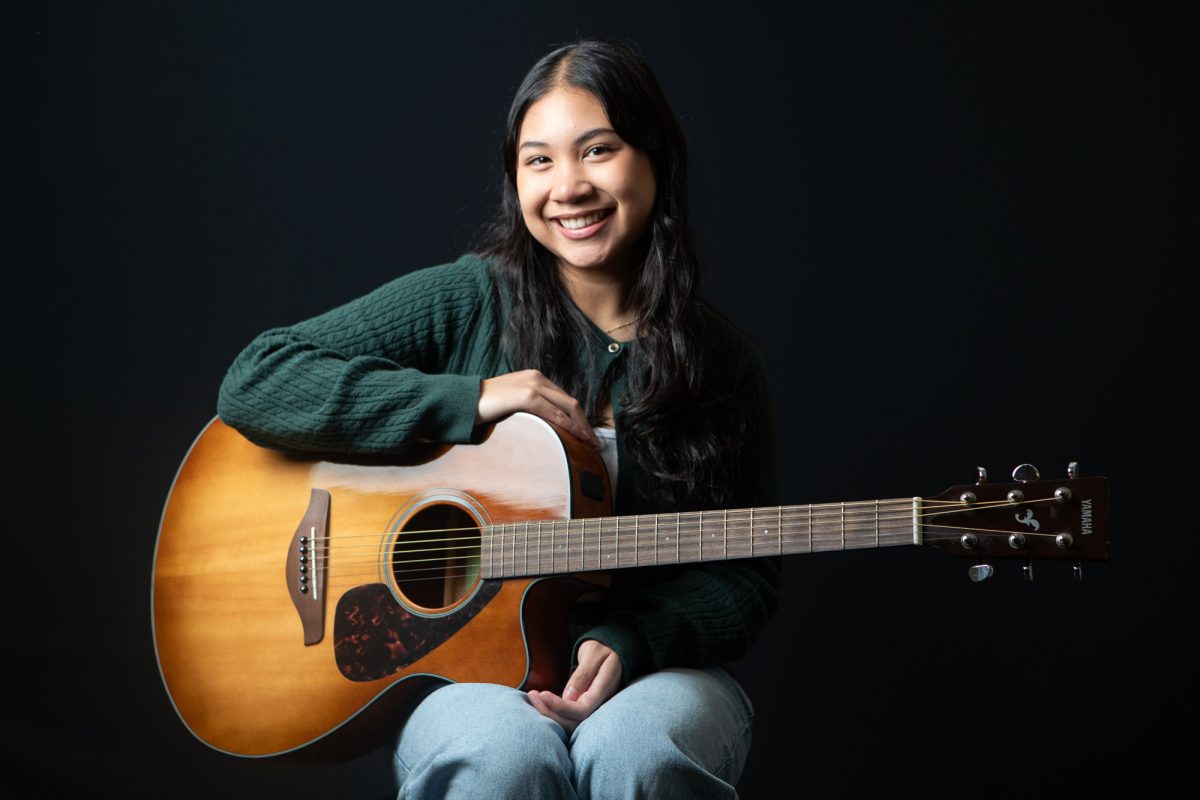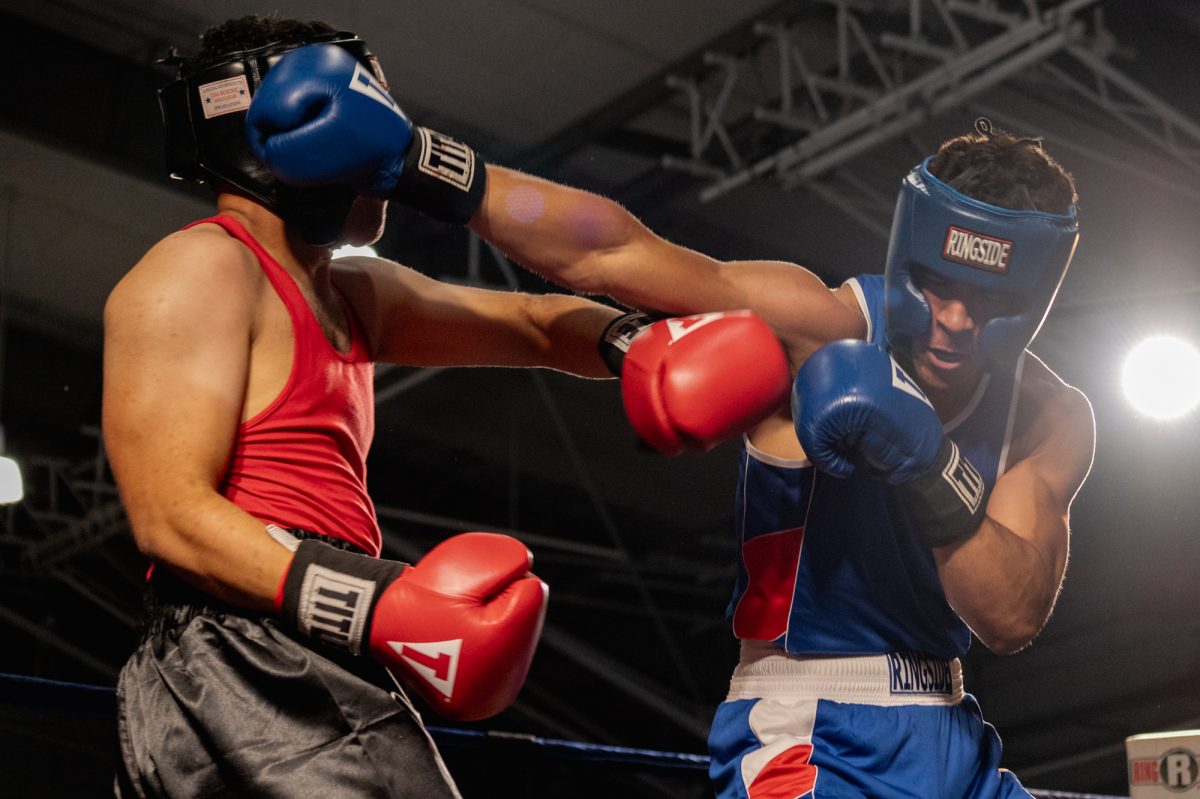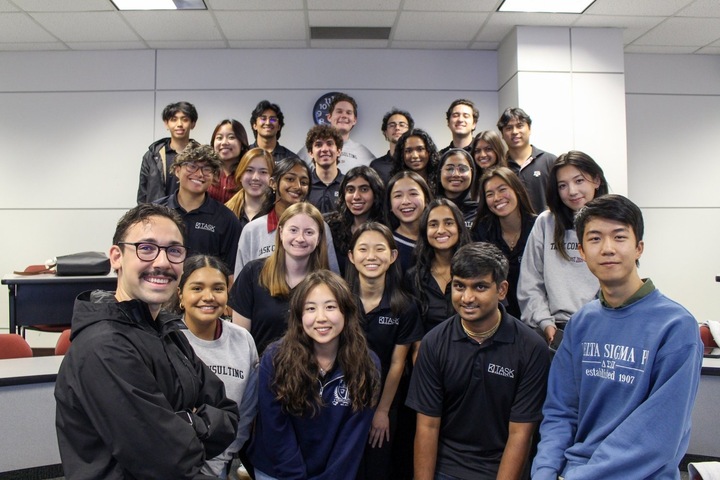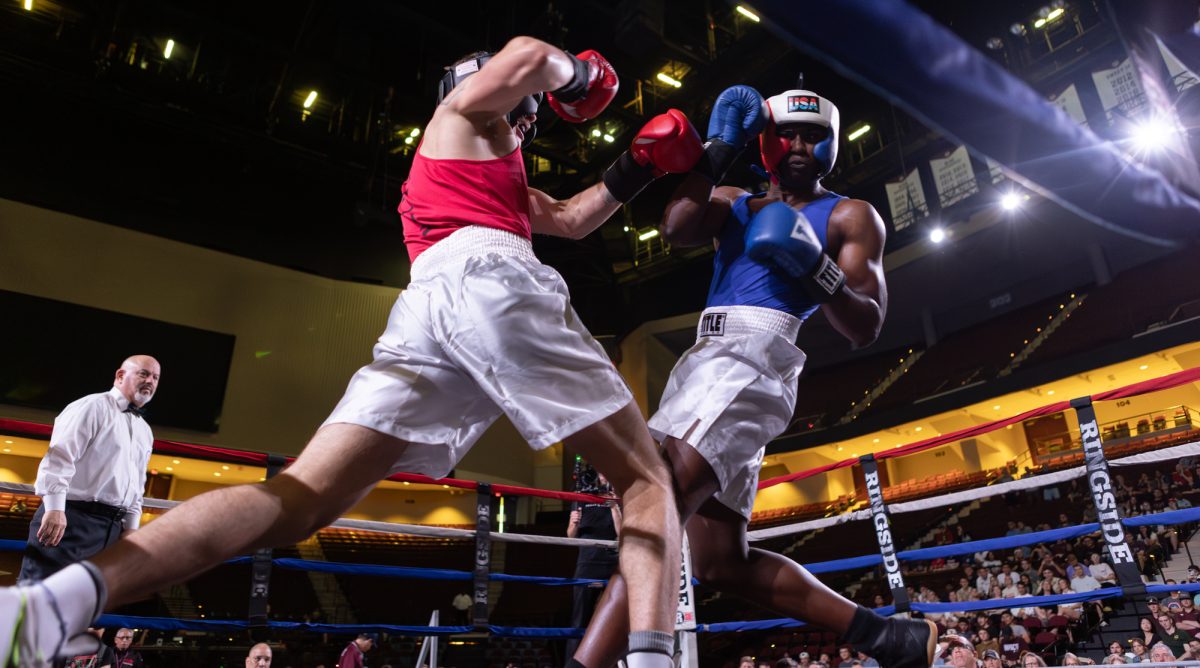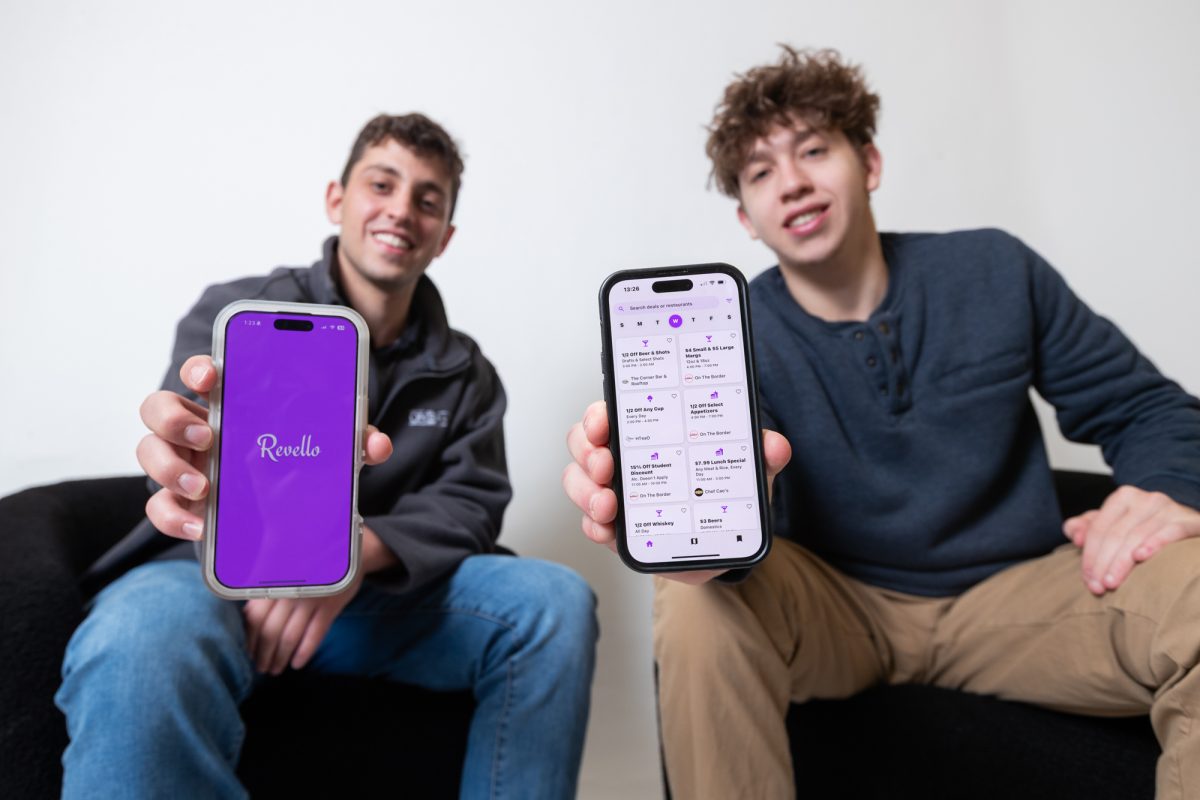When Irene, Miguel and Francisco Fernandez were growing up in Honduras, they had no idea they would carry on the legacy of their father, Don Miguel, by producing and roasting their family farm’s coffee beans. All three siblings found their way to Texas A&M, a university that Don Miguel grew attached to through years of visiting the campus his children spent so much time at.
After Don Miguel’s passing, Irene set out to find a way to honor their father and accomplish a goal he never got to, which is when she stumbled upon the Texas A&M Center for Coffee Research and Education. It was there that she met the center’s Assistant Director Eric Brenner, Class of 2006, who played a crucial role in educating the siblings on how to ethically and safely turn their farm’s beans into a cup of coffee to sell. Owner of What’s The Buzz Specialty Coffee Rodrigo Chavez, who works closely with Eric at the center, guided the siblings through a week-long crash course in coffee, as well.
The roasting process
On Sept. 18, the Fernandez family roasted coffee beans from their farm in Honduras for the very first time at What’s The Buzz in College Station on what would have been their late father’s birthday. Miguel said it was a meaningful full-circle moment coming back to A&M to continue their father’s legacy.
“He would’ve loved to see his kids go back to A&M,” Miguel, Class of 2000, said. “He developed a great deal of love for the university because his three kids were educated there and he visited often — he loved College Station. It was sort of a tribute to go back to where it all started and to do something for him in return for something that he had done for us.”
Brenner and Chavez contributed to the siblings’ formal knowledge of the coffee industry and how to harvest, process and export beans, Miguel said. All three siblings traveled to A&M for in-person training, one at the center and two at What’s The Buzz Specialty Coffee, which is where Miguel said their vague awareness of the industry turned into a greater understanding of what goes on behind the scenes.
“Since we were little kids, we grew up around coffee and the whole activity that goes around coffee, so the planting and the harvesting and the exporting; everything related to it,” Miguel said. “But it was kind of more of just an awareness that was going on. With the coffee [center], you really got to sit in a classroom format and really understand what really goes behind all of that.”
The coffee farm has been in the Fernandez family for generations and is about an hour drive from their home in Honduras, but it started with the siblings’ great-grandfather in the 1900s, Irene said. Once Don Miguel inherited the land, he began buying other plots of land and introducing different varieties of coffee, Irene said, which led him to export the beans through wholesale buyers in different countries.
“It started like his hobby, actually,” Irene said. “But then he fell in love with it, and it started growing and growing, and then that hobby was pretty profitable. And so that’s one of the reasons he would always tell us, ‘That’s why I’m able to pay for your studies. Because of the coffee [and] because I love [those] little plants so much.’”
When researching who to turn to for coffee education, a friend recommended Irene read “Uncommon Grounds” by Mark Pendergrast, and within the first couple pages, she said it mentioned A&M as the destination for the Center for Coffee Research and Education.
“I was surprised that A&M had one of them,” Irene said. “I was like, ‘You have got to be kidding me.’”
The Center for Coffee Research and Education
Brenner, the assistant director at the center, was born and raised in Costa Rica and comes from a long line of coffee farmers from Guatemala beginning in the 1800s, he said. While he was growing up in Costa Rica, there was a law that quality coffee was export only, which led to Brenner’s original distaste for the drink.
“People would tell us to roast coffee with sugar, or we would add a lot of sugar and creamer to make it palatable, which is actually the history of coffee,” Brenner said. “Most of the coffee that you drink nowadays, especially the big companies, they just produce really bad, cheap coffee. And so there’s a reason you have a lot of sugars and creamers and all this stuff, because that’s the focus of the coffee.”
When Brenner came to college, a friend of his introduced him to something other than a caramel macchiato from Starbucks, which he said was much more palatable. Once he started his master’s degree at A&M, his entire perspective of coffee changed, he said.
“I was a student here at the Borlaug Institute internship with The Ministry of Agriculture in Costa Rica, specifically,” Brenner said. “And I just got really interested in the whole concept of coffee.”
Before he became the assistant director at the center, Brenner said he worked as the program coordinator for Latin America and the Caribbean, where they began working on a coffee project in Central America benefitting the countries of Guatemala, El Salvador and Honduras.
“This project was to help coffee farmers with climate change, low prices and pests and diseases,” Brenner said. “Those are the three threats that really are both in coffee, right. And even though they’re very distinct in nature, they are intrinsically related and weld together.”
In January 2024, Brenner and Dr. Nadav Mer led the center’s first study abroad trip to San Isidro, Costa Rica, where students learned about agricultural economics and the specialty coffee value chain.
Furthering Aggieland’s coffee outreach
Collin Arledge is the director of development for the Department of Agricultural Economics in the College of Agriculture and Life Sciences. Since the Center for Coffee Research and Education is under AgriLife, Arledge said he works alongside them by helping connect former students and friends of A&M for philanthropic impacts.
“The coffee center is really focused on international development,” Arledge said. “So working with the small hold coffee farmers in the countries of origin where the coffee is grown and helping them to have better agricultural practices, have better harvesting practices and ultimately be able to grow a better quality crop so they can then sell it at a higher price and increase their profitability.”
The Center for Coffee Research and Education is currently one of two coffee education centers in the nation, the other being UC Davis Coffee Center in California. Long term, A&M is trying to become a competitive educational center that can teach students or community members the ins and outs of coffee, Arledge said.
“The coffee industry, more and more, is really demanding of leaders coming out of Texas A&M University to be prepared to come into the coffee industry as leaders who are well-versed in all aspects of coffee,” Arledge said. “So we are working to do anything from [having] a fully-certified coffee lab on the campus of Texas A&M to having a certificate program that’s essentially equivalent to a minor that would be coffee for students to be able to participate in.”
Looking to the future
Reflecting on when the Fernandez siblings roasted their beans, Irene said the day aligned and felt meant to be. Irene said the ultimate goal for her siblings would be to have their own brand where they roast the coffee themselves, but right now, they’re just taking baby steps to get there and improving what they can.
“The other thing that I think is very important for us is to somehow work with A&M to give back to the community,” Irene said. “I know that we have a foundation that we helped a lot of the communities around the town and the coffee farms, because that’s pretty much what makes our labor force.”
The family will be looking for projects they can do with the university, Irene said. Miguel said he looks at this experience with A&M as a memorable moment.
“It was kind of that emotional experience, but then us being able to give back to dad in a way where he gave us A&M, and now we’re giving A&M to him,” Miguel said.


